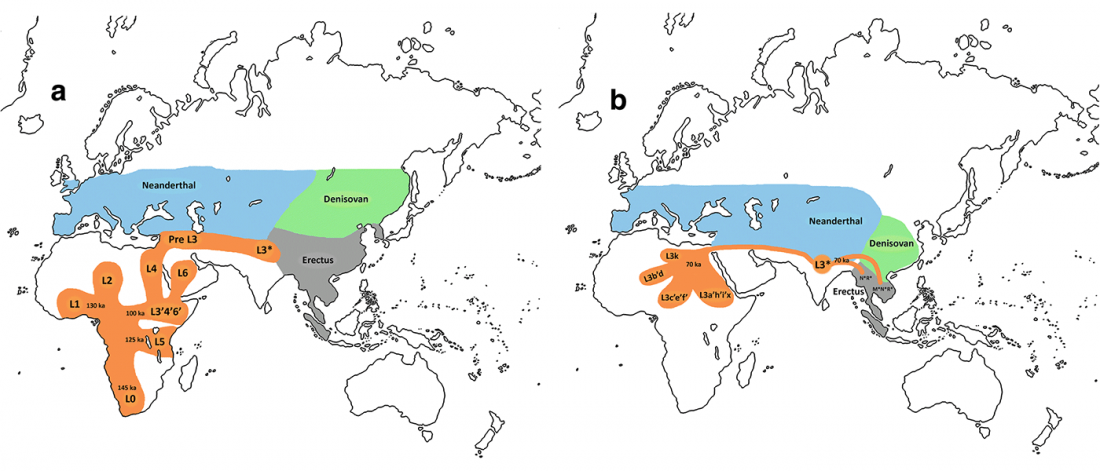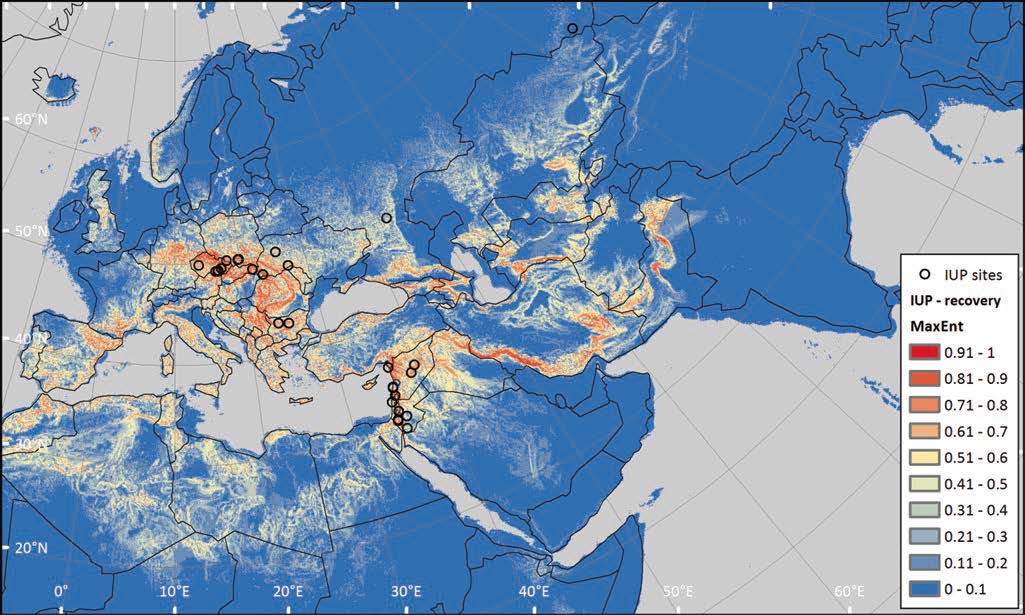Open access Carriers of mitochondrial DNA macrohaplogroup L3 basal lineages migrated back to Africa from Asia around 70,000 years ago, by Cabrera et al. BMC Evol Biol (2018) 18(98).
Abstract (emphasis mine):
… Read the rest “Recent Africa origin with hybridization, and back to Africa 70,000 years ago”Background
The main unequivocal conclusion after three decades of phylogeographic mtDNA studies is the African origin of all extant modern humans. In addition, a southern coastal route has been argued for to explain the Eurasian colonization of these African pioneers. Based on the age of macrohaplogroup L3, from which all maternal Eurasian and the majority of African lineages originated, the out-of-Africa event has been dated around 60-70



